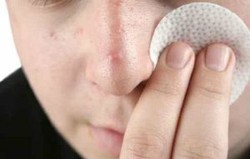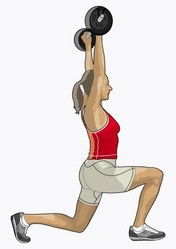What Is Vitamin E?
Vitamin E is a fat soluble vitamin which was isolated from wheat germ in 1936 by the American doctors H. Evans and K. Bishop. Unlike other fat soluble vitamins it is stored in the body only for a fairly short time.
What Does Vitamin E Do For You?
There have been more extravagant claims about the "magical properties" of vitamin E than for most of the other other vitamins put together (with the possible exception of vitamin C). It keeps you young, increases sexual potency, cures heart disease, prevents baldness, fights the effect of pollution on the lungs... and the list goes on and on.
Indeed, numerous professional scientific studies, often using animals, have produced some remarkable results seeming to support these claims. However very few of them have been clinically proven in a manner which is totally acceptable to science.
Factually, vitamin E protects the fats found in all body cell walls - an extremely important function.
It has been used as an anti-blood clotting agent and to help regenerate new skin and prevent scar formation internally and externally. (Vitamin E is absorbed through the skin when applied as an ointment.)
It is popularly claimed that vitamin E helps in the treatment of coronary disease. Although certain studies have shown that this may be the case, there is no acknowledged confirmation of this from other medical studies.
American researchers, experimenting with rats, have apparently shown that the effect of air pollutants (smog, cigarette smoke) can be considerably lessened by high doses of vitamin E. Rats on vitamiri E deficient diets became ill or died when continually exposed to air pollutants. The control group of rats, under the same conditions but on a high E diet, remained well. This is encouraging research, but what is true for rats is not necessarily true for humans.
There have also been experiments with mice which have shown that vitamin E considerably reduced the number of age pigments in their testes. This had led to the popular belief that E can retard or reverse the ageing process. This has certainly not been clinically proven.
Food Sources
Important
- Tinned fish e.g. salmon, sardines, tuna (60- 100g serving)
- Avocado pear (150g 1/2 )
- Sweet potatoes (100g serving)
- Nuts (except walnuts) (50g serving)
- Vegetable oils - safflower, palm, wheat germ (20g serving)
Moderate
- Eggs (in yolk) (2)
- Mayonnaise (20g serving)
- Walnuts
- Vegetables - green and leafy e.g. broccoli, Brussels sprouts, spinach (100g serving)
- Vegetable oils - maize, 'olive, peanut, soya (20g serving)
Low or Nil
- Meat
- Liver
- Cereals
- Fruit
- Dairy products
- Vegetables - carrots, potatoes, cauliflower
What Destroys Vitamin E?
It is substantially destroyed by commercial food processing, especially deep freezing . Vitamin E is therefore added to many processed foods.
Heat can destroy about 30% of the vitamins when carrots, Brussels sprouts and cabbage are boiled.
Exposure to oxidising conditions such as light and air cause slow losses of E which are accelerated by heat.
Milling techniques can remove it from grains. There is a 92% loss in the vitamin content of white flour produced from wholewheat grains - the wheat germ is removed and bleaching agents kill vitamin E.
Deficiency Problems and Symptoms
Except for anaemia in low birth weight new babies born before adequate reserves of E have accumulated, deficiency in this vitamin does not appear to cause any specific disease. In fact , the human body is rarely deficient in vitamin E.
However, since it is a fat soluble vitamin it is not absorbed into the body if there are insufficient fat digesting enzymes present as is often the case with people suffering from certain diseases such as cystic fibrosis.
There has been some argument that increased consumption of polyunsaturated fatty acids in the Western world should mean a higher intake of vitamin E. This is really a fallacy since polyunsaturated fats (mainly vegetable oils) are themselves a source of the vitamin.
Recommended Daily Intake
USA figures suggest an average of 8 to 10 milligrams per day with a slight increase during pregnancy and while breast feeding.
An American biochemist has been quoted as saying: "You can't live without vitamin E but you can get enough of it without trying."
This assumes, of course, a balanced diet.
Use of Supplements (on medical advice)
It is used in the treatment of internal diseases (e.g. cystic fibrosis) where there are insufficient fat absorbing enzymes present.
Toxicity
Vitamin E is considered to be comparatively non toxic though there have been no studies on the long term use of high doses.
You might also like
AcneAcne is an inflammation of the skin centered in the Sebaceous Glands.
SquatsThe Squat is universally recognized as a key weight training exercise. Requir...




 Your rash and itching problems may be Scabieson 03/10/2013
Your rash and itching problems may be Scabieson 03/10/2013
 Tickson 11/06/2011
Tickson 11/06/2011
 Vitamin Kon 10/10/2011
Vitamin Kon 10/10/2011
 Vitamin B9on 10/10/2011
Vitamin B9on 10/10/2011


Comments